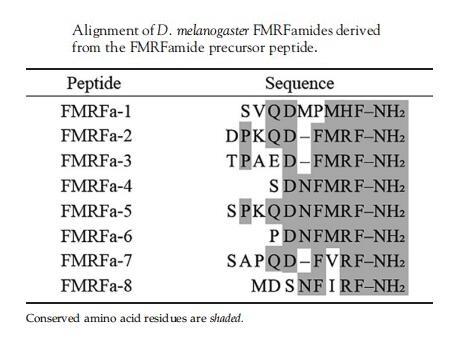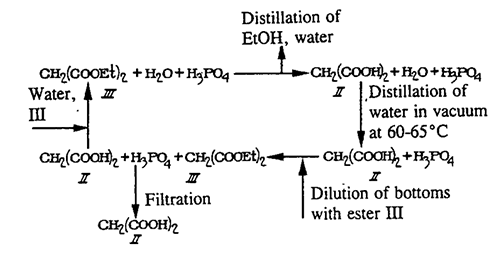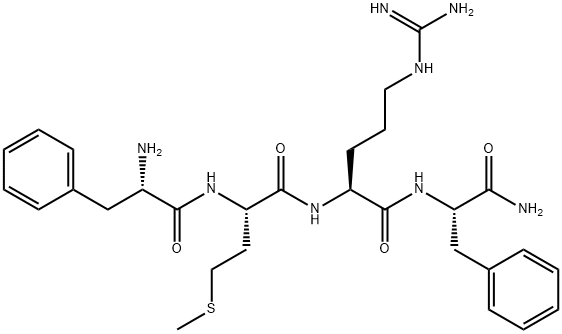Biological functions and release of ?FMRFamide
Jun 13,2022
FMRFamide (FMRFa) was originally isolated as a cardioacceleratory peptide from mollusks. To date, a number of biologically active FMRFas and their related peptides have been identified.
Discovery
FMRFa was originally discovered as a factor with cardioacceleratory activities from the extract of mollusk ganglia.After the discovery of FMRFa, a number of peptides having extended lengths at the N-terminal portion have been identified. The extended forms and related peptides are together designated FMRFamide-related peptides (FaRPs), generating a large family of FaRPs. Structure Structural features FaRPs have the common structure of C-terminal RF-NH2. D. melanogaster FMRFa is composed of seven amino acids with a C-terminal FMRF-NH2 sequence. In addition to FMRFa, several extended forms and other related peptides (FaRPs) are produced from a single prepropeptide. The processed FaRPs, which are derived from identical prepropeptide, have different lengths. Not all FaRPs have a conserved C-terminal FMRF-NH2 but have similar C-terminal sequences such as FMLF-NH2.

Synthesis and release
Gene, mRNA, and precursor D. melanogaster FMRFa mRNA produces a deduced prepropeptide composed of 347 aa. The prepropeptide is composed of a signal sequence, and 10 copies of FMRFa and extended FaRPs. The mature peptides are processed proteolytically and amidated at each C-terminal of the peptides.
Distribution of mRNA
FMRFas in both D. melanogaster and the blowfly are expressed in the six large neurosecretory cells (Tv neurons) in the thoracic ganglia and in the thoracic endocrinal cells.Expression sites are widely observed throughout the CNS. FaRPs are observed not only in the endocrinal secretary cells but also in the central interneurons—for example, in the optic lobes in the brain, and the dorsal and caudal protocerebrum in the midbrain.
Biological functions
Target cells and function The predominant effect of FaRPs is the reduction of spontaneous muscle contractions, such as in the intestinal muscle and the heart rate. Among FaRP subtypes, some FaRPs function in gut contraction and other subtypes do not. Physiological discrimination according to different subtype of FaRPs results in extensive functions.For example, FaRPs exert acceleratory effects on the heart rate, inhibitory effects on gut motility, and modulate synaptic activity. Furthermore, sequential ecdysis behavior is also regulated by FaRPs, consequently activating the downstream of the eclosion hormone (EH) and ecdysistriggering hormone (ETH).During ecdysis, FaRP-expressing Tv neurons are activated by ETH.
- Related articles
- Related Qustion
The head activator is a neuropeptide that regulates pattern-forming processes in Hydra magnipapillata.....
Jun 13,2022Biochemical Engineering2,2-Dimethyl-1,3-dioxane-4,6-dione is an organic compound, which is a white solid at room temperature and decomposes when heated.....
Jun 14,2022APIFMRF AMIDE
64190-70-1You may like






